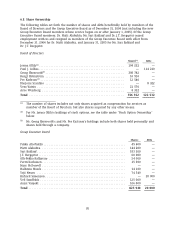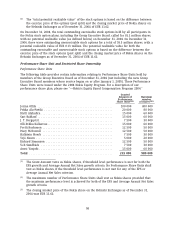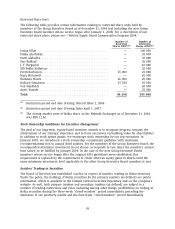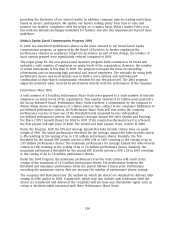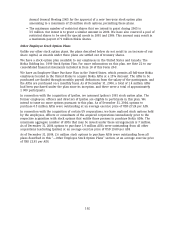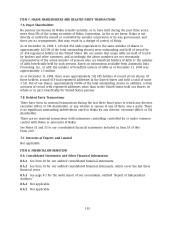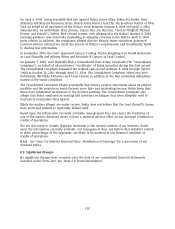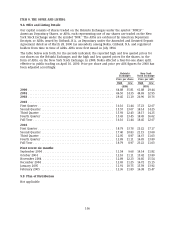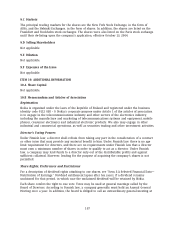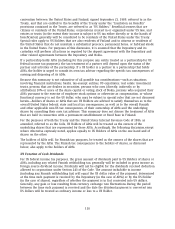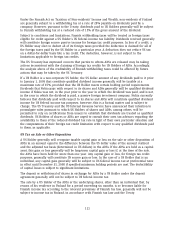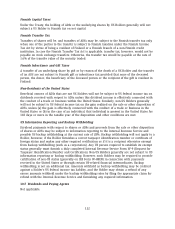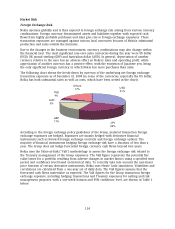Nokia 2004 Annual Report Download - page 105
Download and view the complete annual report
Please find page 105 of the 2004 Nokia annual report below. You can navigate through the pages in the report by either clicking on the pages listed below, or by using the keyword search tool below to find specific information within the annual report.8.A.6 See Note 3 to our consolidated financial statements included in Item 18 of this Form 20-F
for the amount of our export sales.
8.A.7 Litigation We and several other mobile device manufacturers, distributors and network
operators were named as defendants in a series of class action suits filed in various US
jurisdictions. The cases were consolidated before a US federal district court in Baltimore, Maryland,
United States. The actions were brought on behalf of a purported class of persons in the United
States as a whole consisting of all individuals that purchased mobile phones without a headset. In
general, the complaints allege that the defendants should have included a headset with every
hand-held mobile telephone as a means of reducing any potential health risk associated with the
telephone’s use, and assert causes of action based on negligence, fraud and misrepresentation. The
relief sought by the complaint included unspecified amounts of compensation for phone and
headset costs, and attorneys’ fees. All of the cases were dismissed by the Federal Court on March 5,
2003, on the theory that the issues raised are primarily within the jurisdiction of the Federal
Communications Commission, not the courts. That dismissal is now on appeal.
We have also been named as a defendant along with other mobile device manufacturers and
network operators in five lawsuits by individual plaintiffs who allege that the radio emissions
from mobile phones caused or contributed to each plaintiff’s brain tumor. The cases are now
before the courts in the District of Columbia. The cases are in the initial stages and motions to
dismiss are being filed.
We believe that the allegations described above are without merit, and intend to defend these
actions vigorously. The courts that have reviewed similar matters to date have found that there is
no reliable scientific basis for the plaintiffs’ claims.
One of our customers in Turkey, Telsim Mobil Telekomuniksyon Hiz. A.S., has defaulted on its
obligations under a financing arrangement secured by us. In February 2004 the Arbitral Tribunal
in Z ¨
urich rendered an award fully approving the claim against Telsim, which was owned and
controlled by the Uzan family and their affiliates. In June 2004, the Swiss Federal Supreme Court
dismissed Telsim’s appeal which rendered the award final and enforceable. In addition, in
conjunction with co-plaintiff Motorola Credit Corporation, we have been successful in a US lawsuit
against individual members of the Uzan family and certain Uzan controlled corporations. The
lawsuit alleges that the defendants fraudulently induced us and Motorola, through a pattern of
misleading and illegal conduct, to provide financing to Telsim. In July 2003, the trial judge held
that Nokia was entitled to a USD 1.7 billion judgment. That judgment has been affirmed by the
appeals court, and should be entered against the Uzans once their request to have the appeals
court reconsider its decision has been ruled upon. On the basis of the award and judgment we
continue vigorously the pursuit to recover all amounts due to us. We wrote off our total financing
exposure to Telsim by the end of 2002.
In 1999, Nokia entered into a license agreement with InterDigital Technology Corporation (IDT) for
certain technology that provided for a fixed royalty payment through 2001 and most favored
licensee treatment from 2002 through 2006. The patents being licensed were subject to litigation
by other manufacturers. In March 2003, IDT settled patent litigation with Ericsson and
Sony-Ericsson and announced that it intended to apply the settlement royalty rates to Nokia under
the most favored licensee provision. After failed attempts at negotiating a settlement, Nokia filed
an arbitration demand seeking access to information necessary to an evaluation of the matter that
has been withheld by IDT. IDT has responded with a counterclaim seeking to apply the Ericsson
and Sony-Ericsson royalty rates to Nokia. An arbitration hearing was completed in January 2005
and an opinion of the arbitrators is expected in the next few months. Nokia does not believe that
IDT’s position has merit.
104



